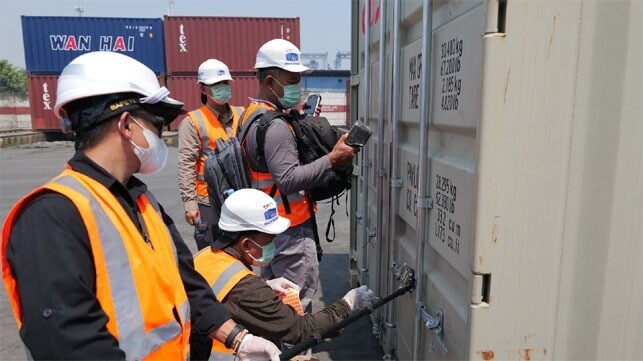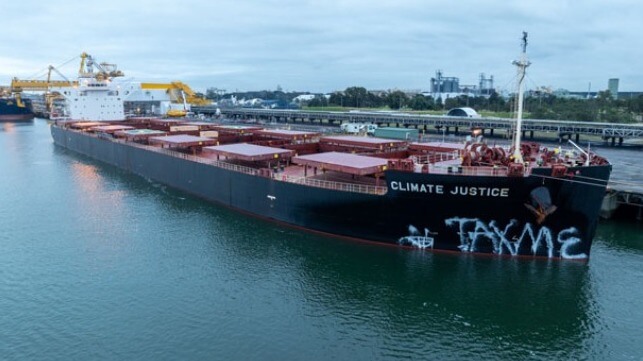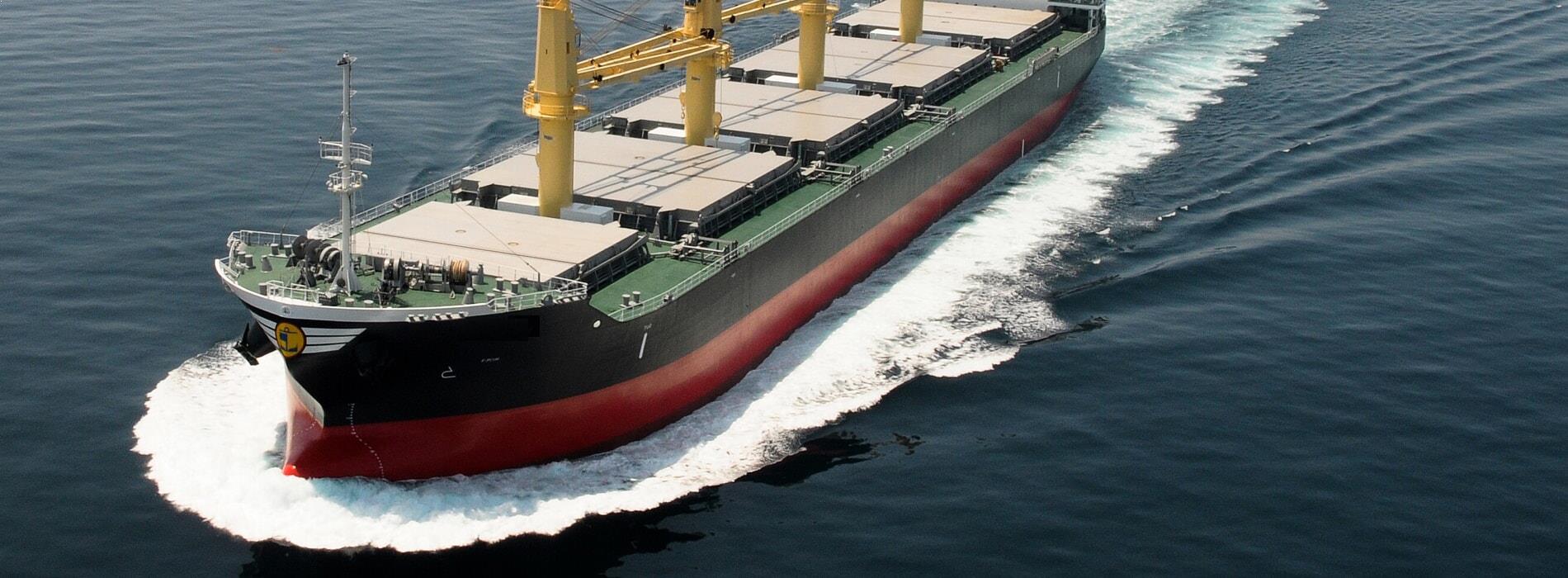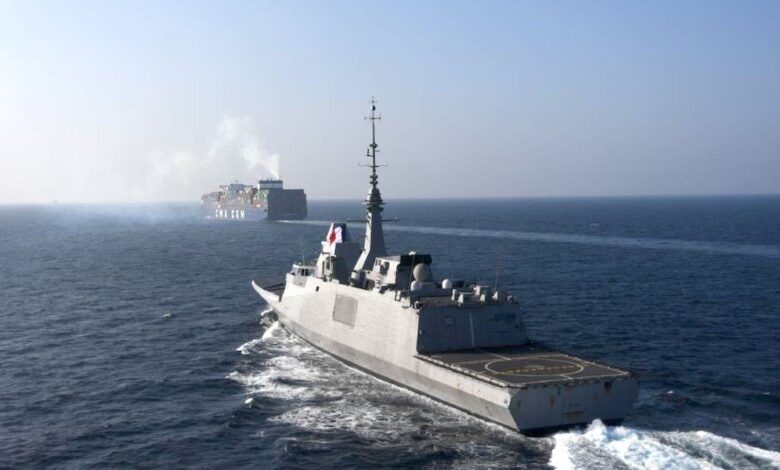Maritime Executive: Philippines Holds Containership with Radioactive Cargo Offshore
Officials in the Philippines are trying to understand how containers with radioactive dust were exported and now what to do with them since they have been sent back to the country. The Philippines is demanding that one of the country’s steel producers take responsibility for the cargo, while the company denies involvement and says only the government has the ability to handle the contaminated cargo.
The case has intensified, according to a report from Bloomberg, after the containership reached the outskirts of Manila last weekend. The unnamed vessel has been refused permission to offload the cargo until plans for its disposal are resolved.
The situation began in mid-September when a shipment of containers holding a cargo of zinc dust triggered alarms at Indonesia’s Tanjung Priok Port in Jakarta. The Nuclear Energy Supervisory Agency (BAPETEN) was notified, and it sent a secondary team that confirmed the high readings in nine out of 14 containers that had been received on September 10 from the Philippines. They performed a swab test on the exterior of the containers and said the radiation was limited to the interior of the boxes.
Days later, a second shipment of nine containers also showed high levels of radiation. Testing confirmed Cesium-137 levels significantly higher than acceptable background radiation doses. It was said to be up to 210 times above the background dose level. Testing showed it was present in five of the containers, and again, the exterior swabs were negative.
Indonesia refused entry for the containers and ordered the carrier to return them to the shipper in the Philippines.
The Philippine Nuclear Research Institute said it has researched the situation and said the boxes were exported to Indonesia by a company called Zannwann International Trading Corp., a Chinese company with operations in the Philippines. Zannwann, they asserted, had purchased the zinc dust from SteelAsia, a manufacturer in the Philippines. Zinc dust is used in industrial and chemical applications because it resists corrosion.
SteelAsia came out strongly denying any association with the contaminated materials. It contends Zannwann brought the product from multiple manufacturers, and the other company is the source of the contamination. SteelAsia says it only manufactures and exports reinforced steel bars, although reports contend the dust is a byproduct of manufacturing. The Philippine authorities are saying the other company’s facility is clean, and the contamination must have come from SteelAsia.
Media reports in Manila said SteelAsia agreed to voluntarily suspend production for testing in its facility. Both its warehouse and Zannwann’s are also to undergo testing, as well as approximately 100 workers at the two companies.
The Philippine Nuclear Research Institute is demanding that SteelAsia take custody of the contaminated containers and arrange for proper disposal by burying the material. For now, the unnamed ship is held in limbo waiting for the situation to be resolved so it can unload the containers.
Related Posts





